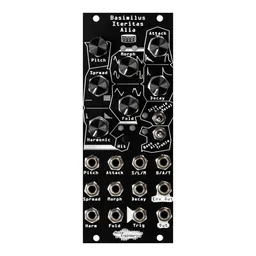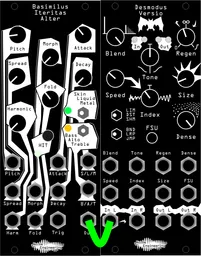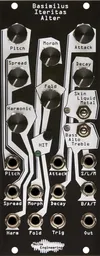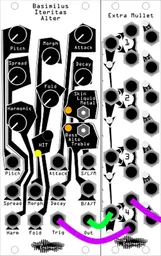We have a lot of distortion modules. You might have heard of them. You might even have some of them. But since releasing them, we’ve been asked the same question (in some form or another) by a lot of users...so we thought it was time for a blog post about the topic.
Mostly we’ve gotten several videos where people see the megadistortion capability of something like Terci Ruina, but in their hands, it just doesn’t have much oomph. Why? (Thanks for the videos, by the way, they make it so much easier for us to diagnose what’s happening!). The simple answer is that square waves don’t really distort. Let’s take a look at some of the technical stuff behind this query.
The easy ones: clipping
A lot of distortion types, like drive and saturation, rely on clipping to do what they do. That basically flattens out the top of the signal to change the harmonic content. Let’s look at what that looks like with a sine wave:

But let’s do the same thing with a pulse:

See how cutting off the top of it doesn’t do anything? Because it’s already square-shaped, making it a square doesn’t actually do anything. What’s this sound like? Let’s hear! This clip is in four parts: first, a plain sine; then, a clipped sine. There’s obviously a big difference between the two. But then, we have a clean square, followed by a clipped square. Not a lot changes other than the volume…
More complex: Anything threshold based, like a wavefolder
There are obviously other types of distortion other than clipping. Wavefolding is one of the most popular, but has a similar issue to clipping regarding square waves. Here’s what a single fold might look like with a single-stage wavefolder. The red dotted lines illustrate the folding thresholds:

When the sine passes the threshold the direction inverts which gives a new timbre to the initially simple sound. But look at what happens when we try the same with a square:

It basically just gets quiet, and with some wavefolders it may just be silent! That’s not what we want at all.
Let’s hear this in action. Here, I’m using the BIA because it has a wavefolder built-in. First, we hear a clean sine, followed by a folded sine, Big difference! But when we switch over to the square, followed by a folded square, it doesn’t sound very different, other than the dynamics.
Learn more:
What if I REALLY want to distort a square wave?
Have no fear: there are still ways! All we really have to do is make our square less rectangular. An easy way to do this but still keep a lot of our initial sound is with a filter. A lowpass filter works, but may be too extreme. Bandpass filters give great tone pre-distortion, and there’s lots of ways you can vary the character of bandpasses (especially if you patch one up manually with a lowpass and highpass filter in series). My personal favorite is with notch or all-pass filters. To me, these add the most interesting character, and also don’t take away from the square-ness of our initial sound too much.
Nothing is set in stone
With all this being said… Try it out! Sometimes, you’ll find something interesting that surprises you (and goes against everything you thought you knew… I do this all the time). For instance, the Pura Ruina does some really weird shit to square waves...though it doesn’t sound all that different, the resulting wave form is crazy different. Experiment! And keep in mind that sometimes visualising things is the best way to understand them, even with sound.






